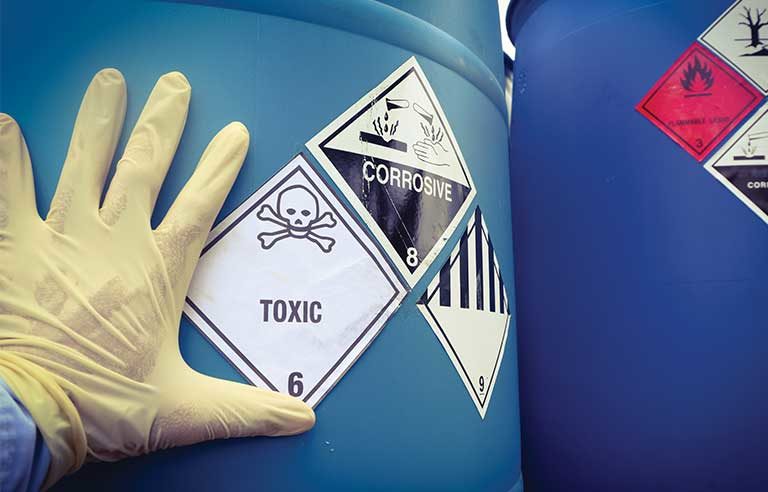Reproductive hazards
Reduce the risks

Photo: Kittisak Kaewchalun/iStockphoto
The Hierarchy of Controls
When addressing concerns related to reproductive hazards, turning to the Hierarchy of Controls “is always the best,” Wood-Black said. “If you can engineer the hazard out of there, that’s wonderful.”
The Canadian Centre for Occupational Health and Safety recommends engineering controls such as reducing exposure to airborne contaminants via improved ventilation in work areas or installing exhaust systems.
For pregnant workers, experts recommend engineering and administrative controls.
“I was a laboratory manager when I was pregnant with my son,” Wood-Black said. “I just said, unless there was an absolute positive reason why I needed to walk into the lab – even though we had reviewed the lab and I was comfortable with what was in the lab – there were certain times I said, ‘I’m just not going into the lab.’ It was just an administrative control at that point.”
Substitution may also be possible, Fletcher said.
“Is there a safe alternative?” she asked. “If they can’t find a safe alternative, think about how you use this chemical in an enclosed space where workers aren’t going to be exposed.”
To reduce exposure, employers can also implement safe work practices – including policies that prohibit eating, drinking or smoking in areas where hazardous products are present.
In addition, workers should be given regular breaks, CCOHS says, along with appropriate personal protective equipment.
If workers are concerned about exposures to reproductive hazards, CCOHS recommends that employers implement a monitoring program to perform sampling that could include air monitoring, radiation dosimetry or medical surveillance. Workers should report any concerns they have and, if they experience any symptoms, seek medical attention or individual counseling, if needed.
Caution and communication
Avoiding exposure to reproductive hazards can also be achieved through caution and communication. Workers and safety pros should ask questions about what they’re working with to understand the necessary precautions.
“You should be aware of how to handle it, how to mitigate it and what steps are being done to minimize exposures,” Wood-Black said.
When OSHA revised its standard on hazard communication (1910.1200) in 2012, the agency required chemical manufacturers, distributors and importers to break down Safety Data Sheets – formerly called Material Safety Data Sheets – into a 16-section format intended to make the information easier for workers to read and retain.
An SDS lists the physical, health and environmental hazards of its corresponding chemical, along with precautions for safely handling, storing and transporting the chemical.
Awareness and asking questions are especially important when new chemicals are brought into a facility. Wood-Black said workers and safety pros should ask, “Why are we bringing in this material to start with? “How is it going to be stored? Where is it going to be stored? How is it going to be transferred?”
Workers who are responsible for chemical selection also should be trained. “They need to ask those questions before it gets to the safety professional,” she said.
Post a comment to this article
Safety+Health welcomes comments that promote respectful dialogue. Please stay on topic. Comments that contain personal attacks, profanity or abusive language – or those aggressively promoting products or services – will be removed. We reserve the right to determine which comments violate our comment policy. (Anonymous comments are welcome; merely skip the “name” field in the comment box. An email address is required but will not be included with your comment.)

